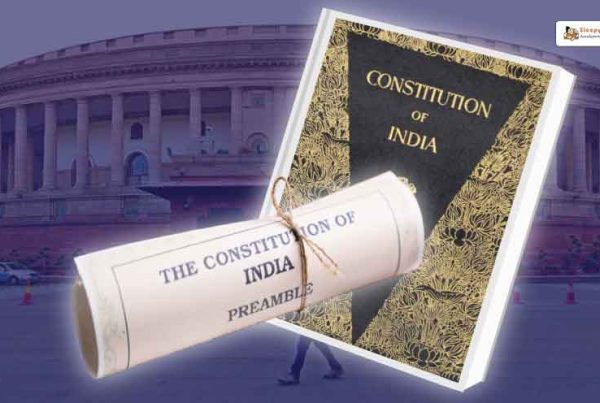The First Amendment is a cornerstone of American democracy, guaranteeing essential freedoms like speech, religion, and the press. This article delves into how the First Amendment was shaped, how it has evolved, and its role in today’s society. By understanding its history and interpretation, we can better appreciate its importance and the challenges it faces.
Key Takeaways
- The First Amendment protects freedoms of speech, religion, and the press, which are vital to democracy.
- Its origins and influences come from a mix of historical documents and philosophical ideas.
- Supreme Court cases have played a big role in interpreting and expanding these freedoms.
- Challenges like censorship and the digital age continue to test the limits of the First Amendment.
- Comparing the First Amendment to other countries’ laws shows its unique role in protecting freedom of expression.
Historical Context of the First Amendment
Origins and Influences
The First Amendment has deep roots in the history of the United States. Its origins can be traced back to the early colonial period, where settlers sought freedom from religious persecution. The ideas of freedom of speech and religion were heavily influenced by Enlightenment thinkers like John Locke and Voltaire. These principles were seen as essential for a free and just society.
Drafting and Ratification
The drafting of the First Amendment was a meticulous process. James Madison, often called the “Father of the Constitution,” played a crucial role in its creation. The amendment was part of the Bill of Rights, which was ratified in 1791. This period was marked by intense debates and discussions, reflecting the diverse views of the Founding Fathers.
Early Interpretations
In its early years, the First Amendment was not as robustly enforced as it is today. Early interpretations were limited, and the amendment was often overshadowed by other pressing issues of the time. However, it laid the groundwork for future legal battles and interpretations that would expand its scope and significance.
The First Amendment, part of the Bill of Rights, protects essential freedoms like speech and religion, setting the stage for a flexible and evolving Constitution.
Core Freedoms Protected by the First Amendment
The First Amendment of the U.S. Constitution is a cornerstone of American democracy, safeguarding several essential freedoms. These freedoms are vital for maintaining a free and open society. The First Amendment ensures that the government cannot infringe on these rights, which are fundamental to individual liberty and democracy.
Judicial Interpretation and Evolution
Landmark Supreme Court Cases
The Supreme Court has played a crucial role in interpreting the First Amendment. Key cases like Schenck v. United States and New York Times Co. v. Sullivan have shaped our understanding of free speech and press. These decisions often reflect the changing values and norms of society.
Shifts in Judicial Philosophy
Over the years, the judicial philosophy regarding the First Amendment has evolved. Initially, the courts took a more restrictive view, but modern interpretations tend to favor broader protections for individual freedoms. This shift highlights the flexibility of the Constitution in adapting to new societal challenges.
Modern Legal Standards
Today, the legal standards for First Amendment cases are more defined. Courts use tests like the “clear and present danger” test and the “strict scrutiny” standard to evaluate cases. These frameworks help ensure that the rights protected by the First Amendment are balanced against other societal needs.
The evolving interpretation of the First Amendment demonstrates its enduring relevance and adaptability in a changing world.
Challenges and Controversies
Censorship and Free Speech
Censorship is a major issue when it comes to free speech. While some argue that certain restrictions are necessary to protect privacy and safeguard minors, others believe that these restrictions can lead to a slippery slope of limiting free expression. Media organizations often resist new restrictions to maintain freedom of expression, but they also have to navigate ethical issues like political corruption and wealth distribution.
Religious Freedom vs. Secularism
Balancing religious freedom with secular principles is another challenge. Some people feel that religious beliefs should not interfere with public policies, while others argue that their faith should be respected in all aspects of life. This tension can lead to conflicts, especially in diverse societies where multiple religions coexist.
Press Freedom in the Digital Age
The rise of digital media has transformed how information is shared, but it also brings new challenges. Issues like fake news, data privacy, and the role of social media platforms in regulating content are hotly debated. Traditional broadcast laws are often seen as outdated in this new landscape, making it difficult to apply old rules to new media.
The First Amendment continues to be a cornerstone of American democracy, but its application in modern society is fraught with challenges and controversies. From censorship to religious freedom and the evolving landscape of digital media, these issues require ongoing dialogue and thoughtful consideration.
Comparative Perspectives
First Amendment vs. Other Countries’ Free Speech Laws
The First Amendment to the U.S. Constitution is unique in its broad protection of free speech. In contrast, many other countries have more restrictions. For example, in Europe, hate speech laws are stricter. This difference highlights the varying cultural and legal approaches to freedom of expression.
Impact of International Human Rights Law
International human rights laws also influence how countries view free speech. The United Nations’ Universal Declaration of Human Rights supports free speech but allows for limitations to protect public order. This creates a balance between individual rights and community safety.
Global Trends in Freedom of Expression
Globally, there is a trend towards more digital censorship. Countries like China and Russia have strict internet controls. However, some nations are pushing back, advocating for more online freedom. This ongoing struggle shapes the future of global free speech.
The first amendment to the constitution provides that “congress shall make no law … abridging the freedom of speech.” However, commercial speech—speech that promotes business interests—often faces more regulation.
The First Amendment in Modern Society
Role in Social Movements
The First Amendment has been a powerful tool for social movements. It allows people to speak out and gather together to push for change. This freedom has helped many groups, from civil rights activists to environmental advocates, to make their voices heard. Without this protection, many important changes might not have happened.
Impact on Political Discourse
In politics, the First Amendment ensures that everyone can share their opinions, no matter how unpopular. This open dialogue is crucial for a healthy democracy. It protects a person’s freedom to associate with others in groups that express messages, such as advocacy groups or political parties. However, it also means that sometimes harmful or false information can spread easily.
Future Directions and Challenges
Looking ahead, the First Amendment will face new challenges. The rise of the internet and social media has changed how we communicate. Courts will need to decide how these new technologies fit with old laws. Balancing free speech with the need to prevent harm will be a key issue. The Constitution of the United States is referred to as a “living document” because its authors intended for it to be adapted by future generations.
The First Amendment plays a crucial role in today’s world, protecting our freedom of speech and expression. It’s more important than ever to understand these rights and how they impact our daily lives. To dive deeper into this topic and explore more about your rights, visit our website. Join us in learning and advocating for the freedoms that shape our society.
Conclusion
The First Amendment has played a crucial role in shaping the flexibility of the U.S. Constitution. By protecting freedoms like speech, religion, and assembly, it has allowed for a dynamic and adaptable legal framework. This adaptability has enabled the Constitution to evolve with changing societal values and challenges. The First Amendment’s enduring significance lies in its ability to balance individual rights with the needs of the community, ensuring that the core principles of democracy remain robust and relevant. As we continue to navigate complex legal and social landscapes, the First Amendment serves as a testament to the foresight of the Founding Fathers and the enduring strength of constitutional democracy.
Frequently Asked Questions
What is the First Amendment?
The First Amendment is a part of the U.S. Constitution that protects several basic freedoms, including freedom of speech, religion, press, assembly, and petition.
Why was the First Amendment created?
The First Amendment was created to ensure that the government could not restrict people’s basic freedoms. It was influenced by earlier documents and ideas about individual rights and government power.
How does the First Amendment protect freedom of speech?
The First Amendment prevents the government from making laws that limit free speech. This means people can express their opinions without fear of government punishment.
What are some important Supreme Court cases related to the First Amendment?
Some landmark cases include Tinker v. Des Moines, which upheld students’ rights to free speech in schools, and New York Times v. United States, which protected the freedom of the press.
How has the interpretation of the First Amendment changed over time?
The interpretation of the First Amendment has evolved through various Supreme Court decisions. These rulings have expanded or clarified the scope of the freedoms it protects.
What are some current challenges to First Amendment rights?
Current challenges include issues like censorship on social media, balancing religious freedom with secular laws, and protecting press freedom in the digital age.








